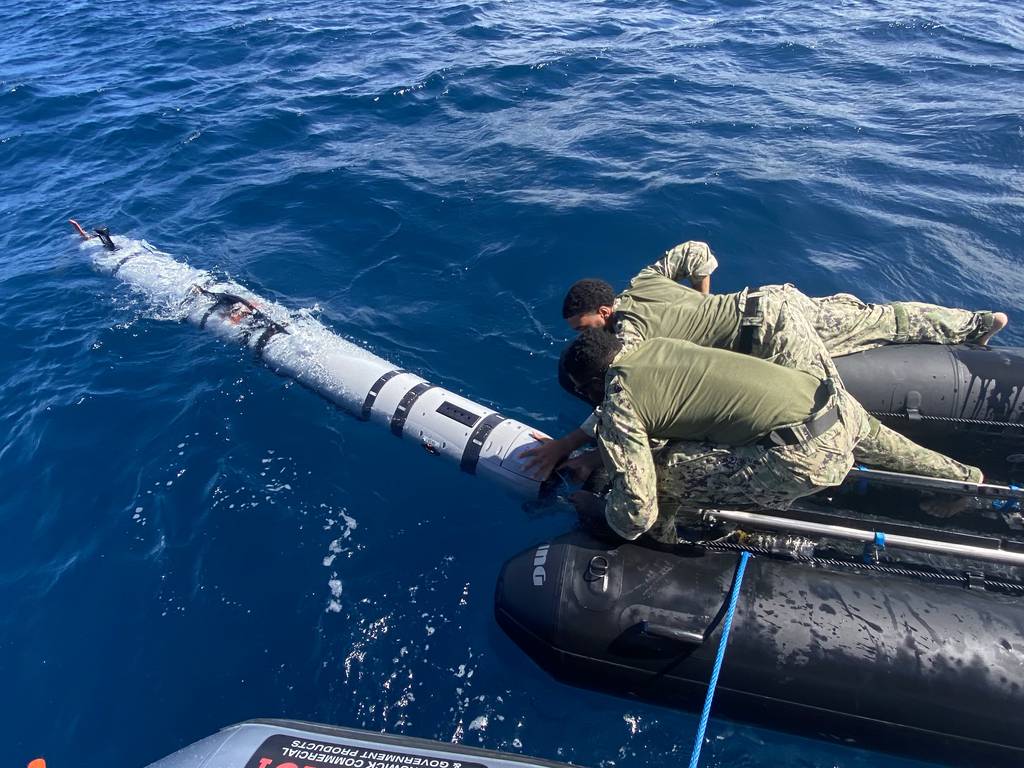SAN DIEGO — The Navy Expeditionary Combat Command enables the rest of the fleet, providing port security, naval construction, mine clearance, salvage diving and more. But as the community thinks about how to modernize to keep up with evolving technology and unpredictable threats, it’s mulling adding a new tool to the toolkit: operating offensive, lethal drones.
Rear Adm. Brad Andros, the commander of NECC, told Defense News he’s been tasked with drawing up ideas for the “NECC of the future,” in line with a broader Navy Force Design 2045 effort.
Using the Maritime Expeditionary Security Forces as an example, he said over the last two decades they evolved from a riverine force into one that now conducts escort missions and port security operations.
“They’ve got to develop into creating a bastion for the ships and submarines” on patrol or even in combat overseas. The 2000 attack on Arleigh Burke-class destroyer Cole highlighted the importance of scanning the waters for asymmetric threats — in that case, a bomb-laden small boat — but current events show this maritime security force will have to keep an eye out for unmanned boats as well as unmanned drones in the air and unmanned craft under the water, too.
If the Maritime Expeditionary Security Forces will have to become counter-unmanned experts to conduct their mission, “while I’m at it, why don’t I just be able to do the offensive side of it as well?”
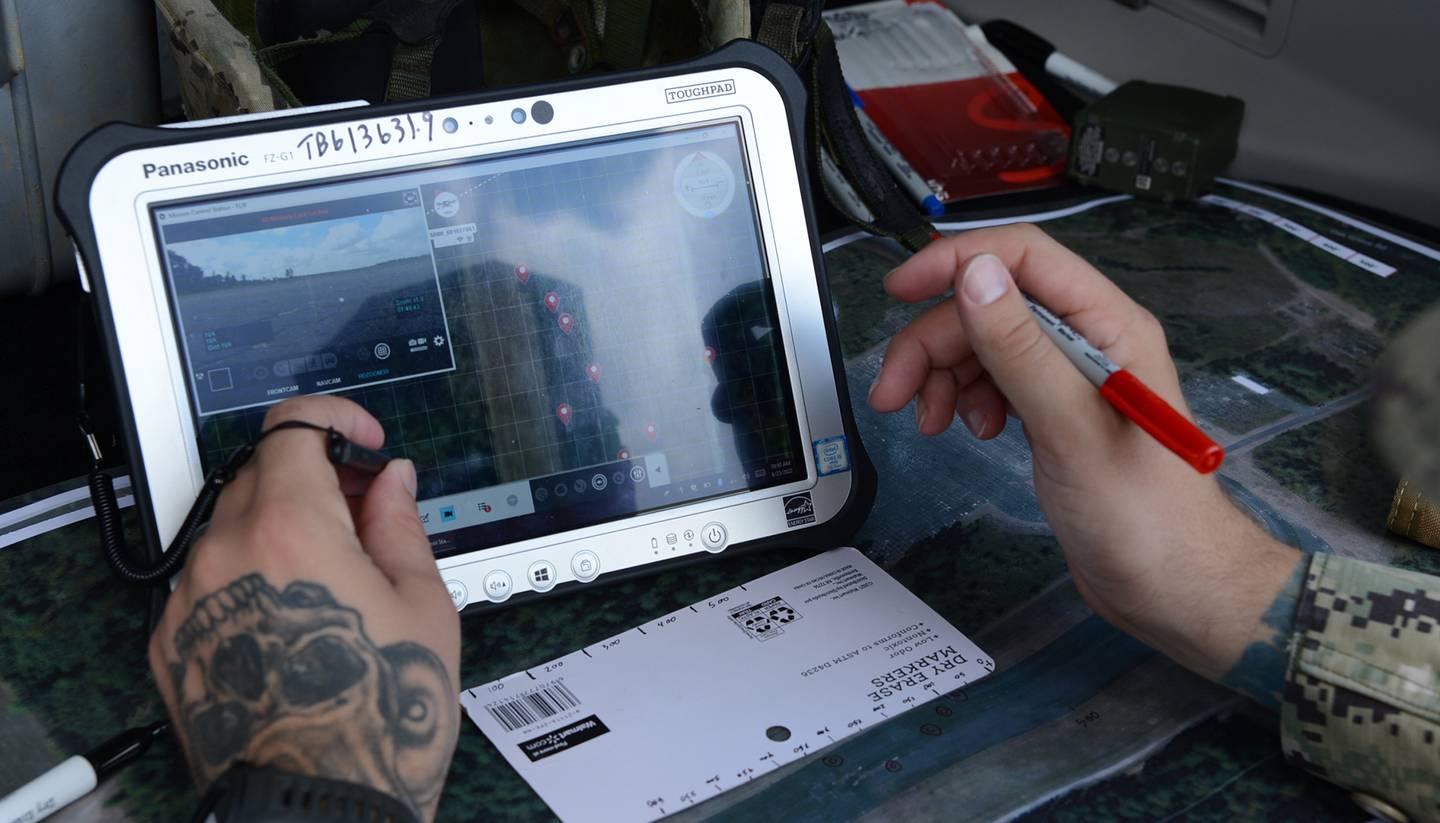
Andros said this led to a larger conversation about NECC’s role, partially inspired by current events.
“Taking what we’re seeing in the Black Sea, taking what we’re seeing in the Red Sea: how do we become that dilemma-creator?” he said.
Ukrainian forces have been able to alter what activities Russian ships can conduct in the Black Sea based on their shore-based drone operations. Similarly, the Houthi forces ashore in Yemen have severely restricted shipping in the Red Sea due to their shore-based attacks.
In both cases, the forces didn’t need to be at sea on expensive ships; they have been effective controlling a confined body of water from land.
Andros said the Marine Corps is pursuing its own version of this with the Expeditionary Advanced Base Operations concept. He said NECC wants to find a way for its force to be additive to what the Marines are doing.
If done right, though, he said NECC could free up a capital ship from having to protect a confined body of water, assuming the U.S. had the right agreements in place to put NECC forces on the ground.
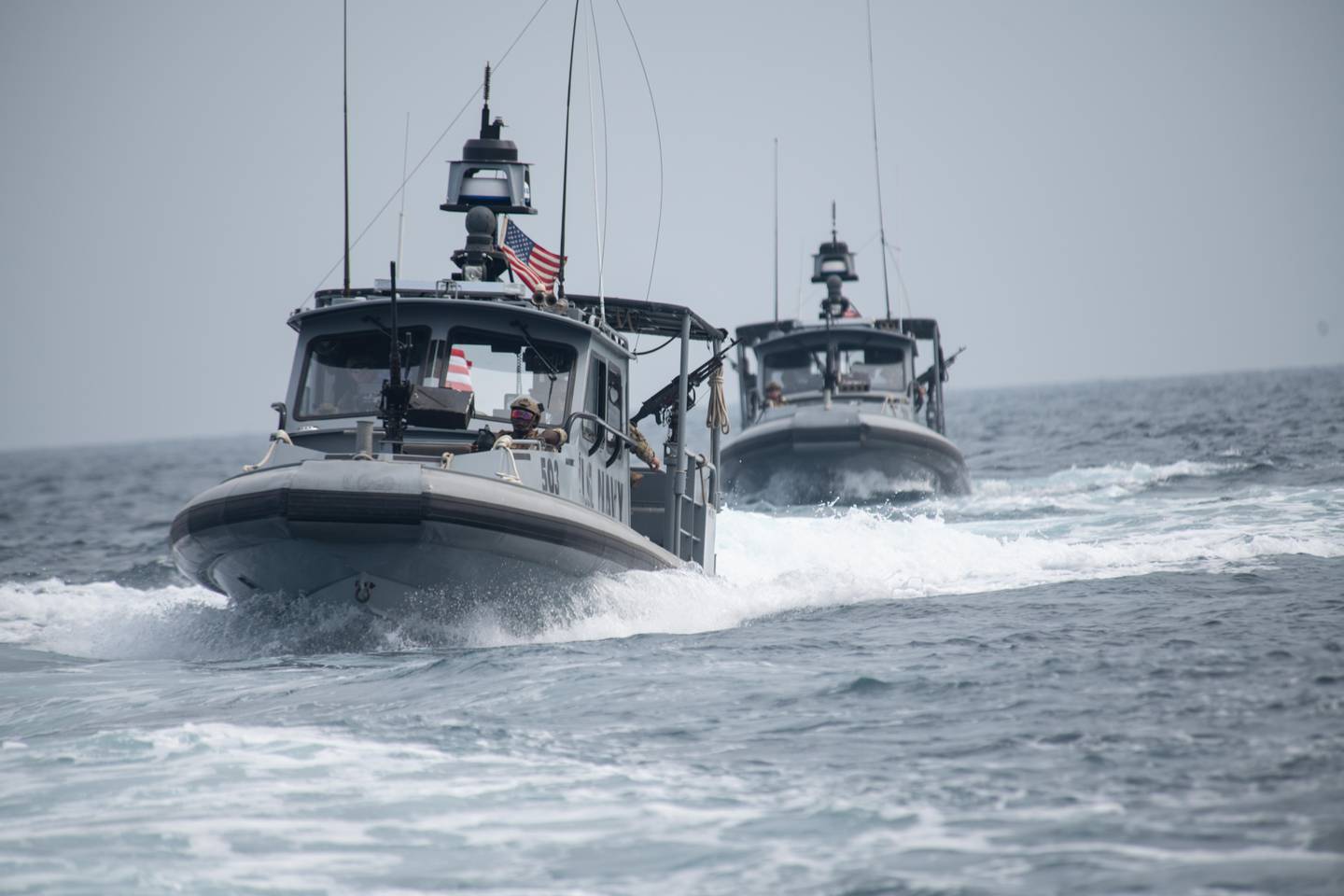
Andros acknowledged this is a departure from NECC’s traditional work, but it may be necessary to have offensive capabilities in order to adequately create a safe haven for U.S. ships and subs overseas.
Navy Expeditionary Combat Command today is “built on protect: law enforcement and patrolling,” the admiral said.
To go after these offensive capabilities, he said the command would have to look into what technical skills the sailors would need for this work, ensure the right ratings and structures are in place to man these units, and realign resources to equip these sailors with offensive drones and other systems.
“It’s not a wholesale change, but it’s enough of a tweak that it’s got to be very deliberate, and it’s going to probably be a good five- to seven-year process to get after it,” Andros said.
Equipment reset
As part of the modernization effort, Andros is looking at NECC’s mismatched gear and considering resetting the inventory.
The force has done a lot of acquisition outside the formal capability development process so it could move fast, he said. It typically bought things that were commercial-off-the-shelf, not expensive, and in small quantities.
As a result, there’s not always commonality throughout the whole NECC force, creating a particular challenge for the sailors tasked with maintaining them.
Asked what he wanted from industry as NECC considers this equipment reset, Andros said the two most important things are that capabilities are packaged into small form factors, and that unit-level sailors can repair themselves.
Andros anticipates increasingly operating in locations without a mature logistics infrastructure, which makes the ability for the sailors to fix their own gear pivotal. He noted that configuration management — ensuring all the radios are common, all the drones are common, and so on — is important for maintainability and one of the reasons NECC is considering this gear reset.
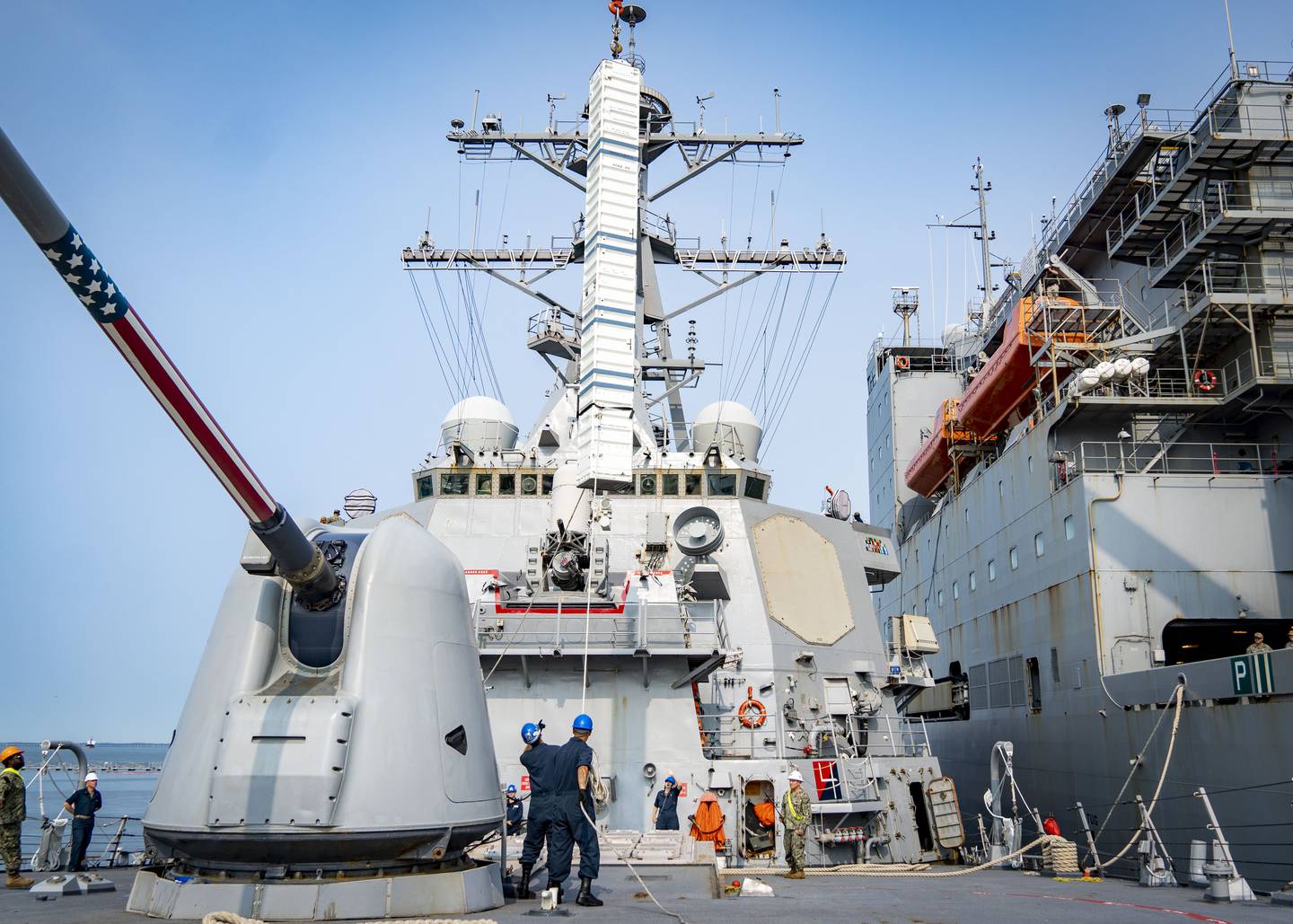
Rearming ships at sea
NECC already has the ability to reload missiles into ships’ vertical launching system cells from ashore or from a barge at the pier, through its Navy Expeditionary Logistics Support Group.
But the idea of being able to reload VLS cells at sea has taken on a new importance in the last year, after Navy Secretary Carlos Del Toro highlighted it as a key gap the Navy needed to fill to prepare for a potential war in the Pacific.
So expeditionary reload teams from NECC have been called in as subject matter experts during testing, including an August 2023 demonstration involving destroyer Porter and Lewis and Clark-class dry cargo ship William McLean.
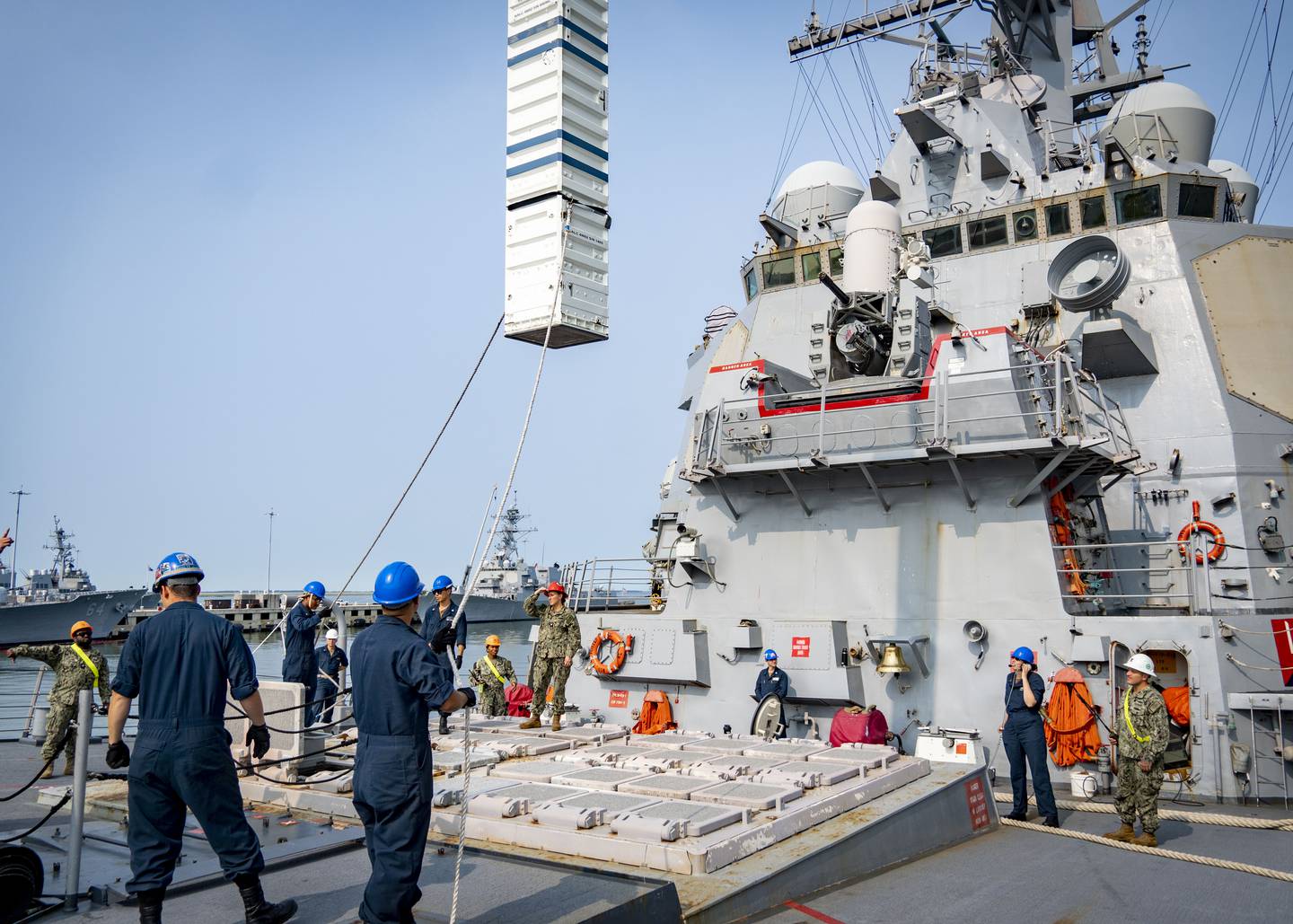
This took place during the Large Scale Exercise 2023 event, which Andros said was important.
“At the tactical level — the humans doing it, taking an object, swinging it over and putting it in — we’re good,” he said, even if the specific systems being tested as part of Del Toro’s effort are new.
But who would command and control this evolution — who would call for the rearm-at-sea to take place, who would be in charge of safety, who would actually operate the cranes and more — still hasn’t been decided. Incorporating this evolution into a major fleet exercise allowed fleet leaders to start working through some of those questions, he said.
As for whether his NECC sailors would ultimately be the ones to embark on Military Sealift Command ships and conduct the rearming themselves, or if MSC would train its crews to operate the cranes, Andros said, “either way is fine by me, just as long as whoever does it is certified to operate the equipment.”
Megan Eckstein is the naval warfare reporter at Defense News. She has covered military news since 2009, with a focus on U.S. Navy and Marine Corps operations, acquisition programs and budgets. She has reported from four geographic fleets and is happiest when she’s filing stories from a ship. Megan is a University of Maryland alumna.
